Why Emergency Dental Visits Are a Growing Concern
Emergency dental visits burden both patients and healthcare systems, with millions of visits annually driven largely by preventable conditions. Understanding how preventive dental care can reduce these emergencies is crucial for improving oral health outcomes, lowering costs, and relieving emergency departments. This article explores the percentage of emergency dental visits that could be avoided through preventive strategies and the transformative benefits they offer.
The Scope and Cost of Emergency Dental Visits
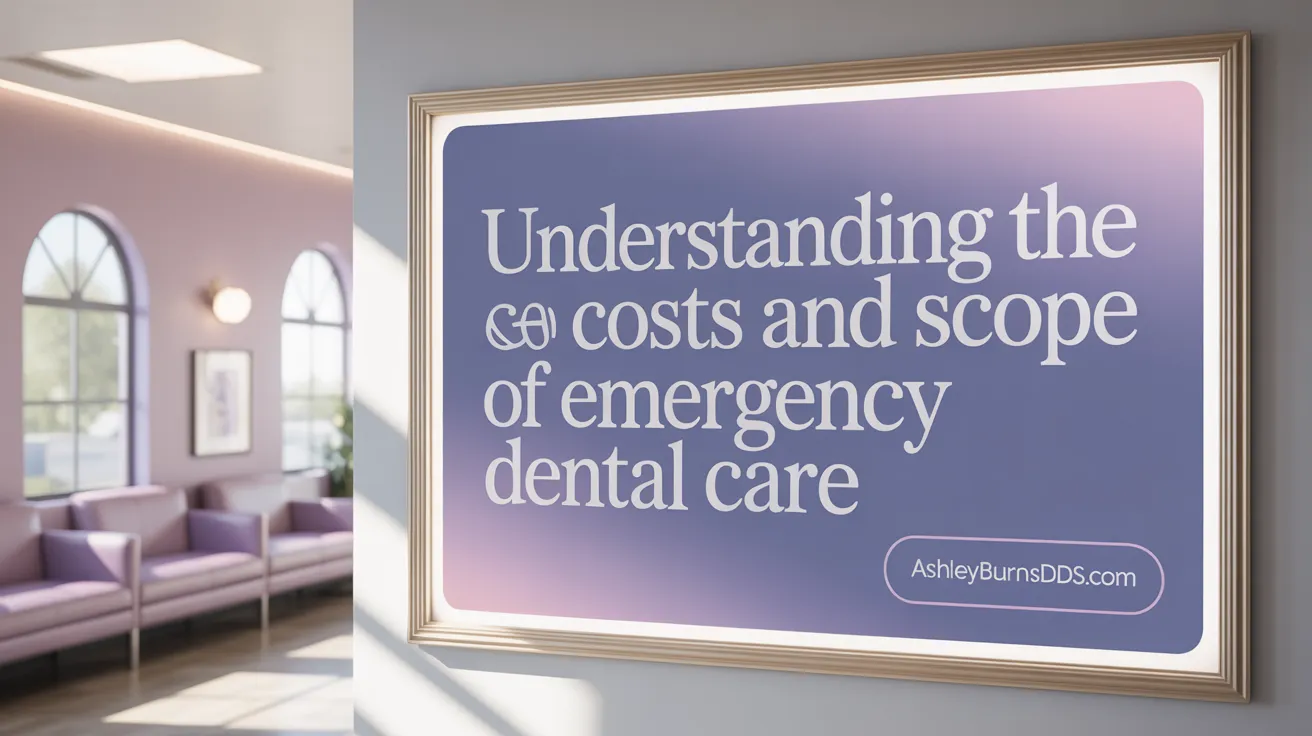
Emergency dental visit statistics
In the United States, nearly 2 million emergency department visits each year are due to dental issues, accounting for approximately 1.4% of all ED visits. These visits often involve conditions like severe toothaches, abscesses, chipped or broken teeth, and soft tissue injuries. The most common age group for emergency dental visits is adults aged 20-39, with young adults and low-income populations showing higher utilization rates. Disparities are notable, with Medicaid beneficiaries and uninsured patients seeking care more frequently than those with private insurance (Emergency department visits for tooth disorders, Annual Emergency Department Visits for Tooth Disorders 2020-2022, dental-related ED visits increase 2000-2010).
Demographics of emergency dental patients
Analysis indicates that non-Hispanic White populations make up over half of emergency dental visits, but racial and socioeconomic minorities, especially Black Americans and residents in lower-income regions, experience higher rates of ED utilization for dental issues. Women aged 21-34 are among the most frequent users of ED dental services. Rural dwellers also tend to rely more heavily on emergency services due to limited access to regular dental care (Demographics of dental-related ER visits, ED visits for preventable oral health conditions in Massachusetts, Dental-related hospital emergency visits).
Cost implications of emergency dental care
Each ED dental visit costs an average of around $700, summing to billions of dollars annually—approximately $1.6 billion just in direct expenses. Many of these visits result in palliative treatment like antibiotics and pain relief, without addressing the underlying issue, further escalating costs. Costs for interventions such as root canals, extractions, and crowns can range from several hundred to over a thousand dollars per treatment, especially if complications or infections require hospitalization (Dental emergency visit costs, Cost comparison of emergency dental visits, Avoiding Common Dental Emergencies).
Trends in emergency dental visits
While overall ED visits for dental problems have shown some decline in recent years, driven by increased awareness and preventive programs, the demand remains high. Notably, there was a decrease in opioid prescriptions during recent years, reflecting shifts toward more cautious pain management practices. Data also suggests that efforts to expand access to preventive dental care, including community programs and insurance coverage, could significantly reduce unnecessary emergency visits and their associated costs (Treat-and-release emergency department visits for dental conditions, Emergency Department Referrals for Dental Pain, Impact of preventive dental care on Medicaid adults).
This data underscores the importance of preventive dental strategies to mitigate the high burden of emergency dental visits, both in terms of patient health and economic impact.
Common Preventable Causes of Dental Emergencies
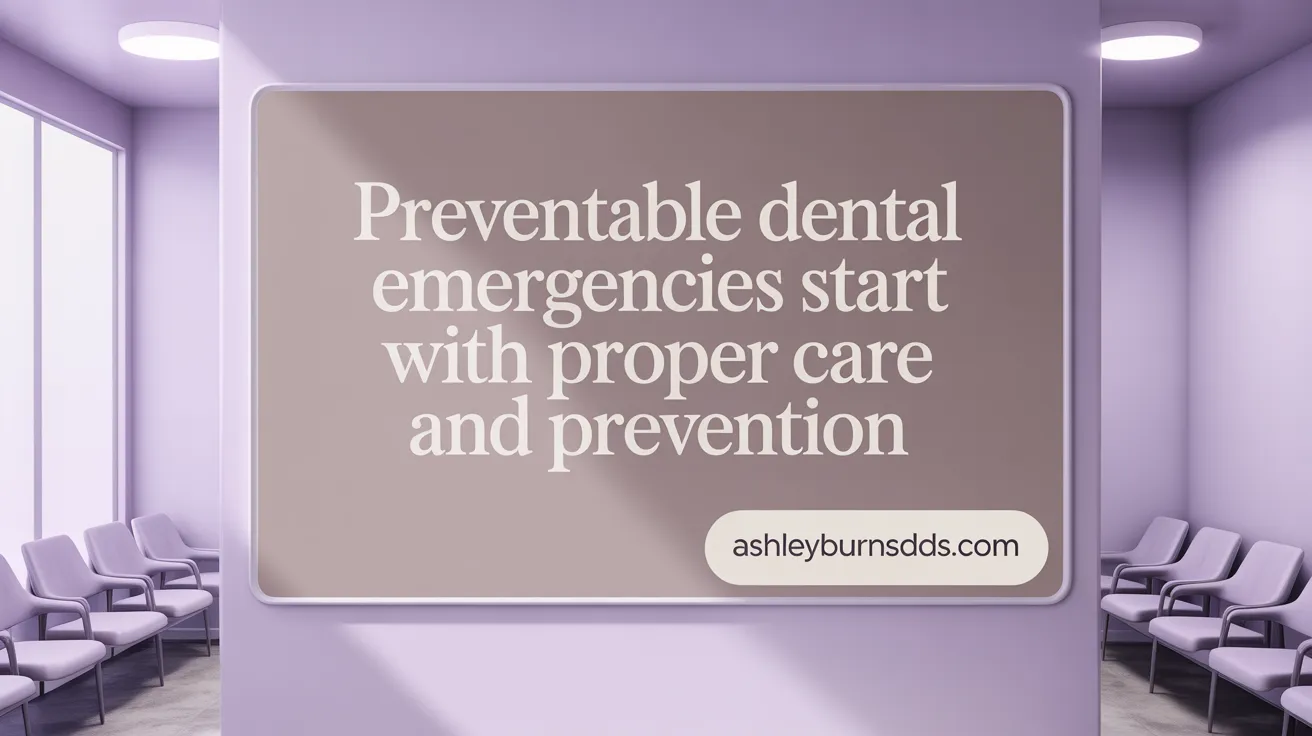
What are the common causes and types of dental emergencies that preventive care might help avoid?
Many dental emergencies are actually preventable and mainly result from conditions like severe tooth decay, dental abscesses, advanced gum disease, and injuries from trauma. For example, untreated cavities can lead to pulpitis or abscesses, causing intense pain and infections that often require urgent treatment. Similarly, gum infections can escalate into cellulitis or dental abscesses if not addressed early. For more details, see Dental Emergencies Overview and Common Dental Emergencies.
Preventive care plays a vital role in mitigating these issues by encouraging regular dental check-ups, which help detect cavities and gum problems before they worsen. The use of fluoride treatments and dental sealants can significantly reduce the risk of decay, especially in children. Protecting teeth in sports with mouthguards and avoiding harmful habits such as biting hard objects or using teeth as tools help prevent traumatic injuries like chipped or knocked-out teeth. For preventive measures, see Preventive Dental Care Importance and Preventing Dental Emergencies.
Good oral hygiene practices, including brushing twice daily, flossing, and avoiding acidic and sugary foods, also prevent the buildup of plaque and bacteria that can cause decay and gum disease. Early treatment of minor issues through prompt dental visits prevents escalation into emergencies. Overall, these preventive measures reduce the likelihood that common problems will develop into urgent dental conditions that require emergency interventions. Learn more at Oral Hygiene and Emergency Prevention and Dental Emergency Prevention Strategies.
The Potent Impact of Preventive Dental Care
Preventive dental care plays a crucial role in reducing the occurrence of dental emergencies, lowering costs, and improving overall health outcomes. Research indicates that individuals engaged in regular preventive practices experience about a 20% to 22% reduction in emergency dental visits, which translates to saving approximately $70 annually in dental costs per person. One of the most effective preventive measures is the use of dental sealants, which can cut cavity incidence in children by up to 80% in the first two years and maintain protection for up to four years. Additionally, community water fluoridation proves highly cost-effective, saving communities billions of dollars each year in avoided treatment expenses.
Preventive care also benefits systemic health by decreasing infections that can exacerbate chronic diseases such as diabetes and heart disease. Overall, these interventions lead to fewer costly emergency treatments, hospitalizations, and improved health outcomes. Early detection during routine visits enables the management of potential problems before they require urgent intervention.
Procedures like sealants, water fluoridation, and early dental interventions serve as frontline defenses. Sealants especially protect the chewing surfaces of molars in children, significantly reducing the risk of cavities that often result in emergency visits. Fluoridated water enhances enamel strength across entire populations, offering a broad preventive shield. Regular check-ups help identify issues early, often avoiding more invasive procedures.
In conclusion, embracing preventive dental care strategies effectively diminishes the incidence of dental emergencies, reduces healthcare costs, and fosters better overall health. Promoting these measures across communities and making them accessible is essential for long-term oral and systemic health benefits.
Strategies and Guidelines to Prevent Dental Emergencies
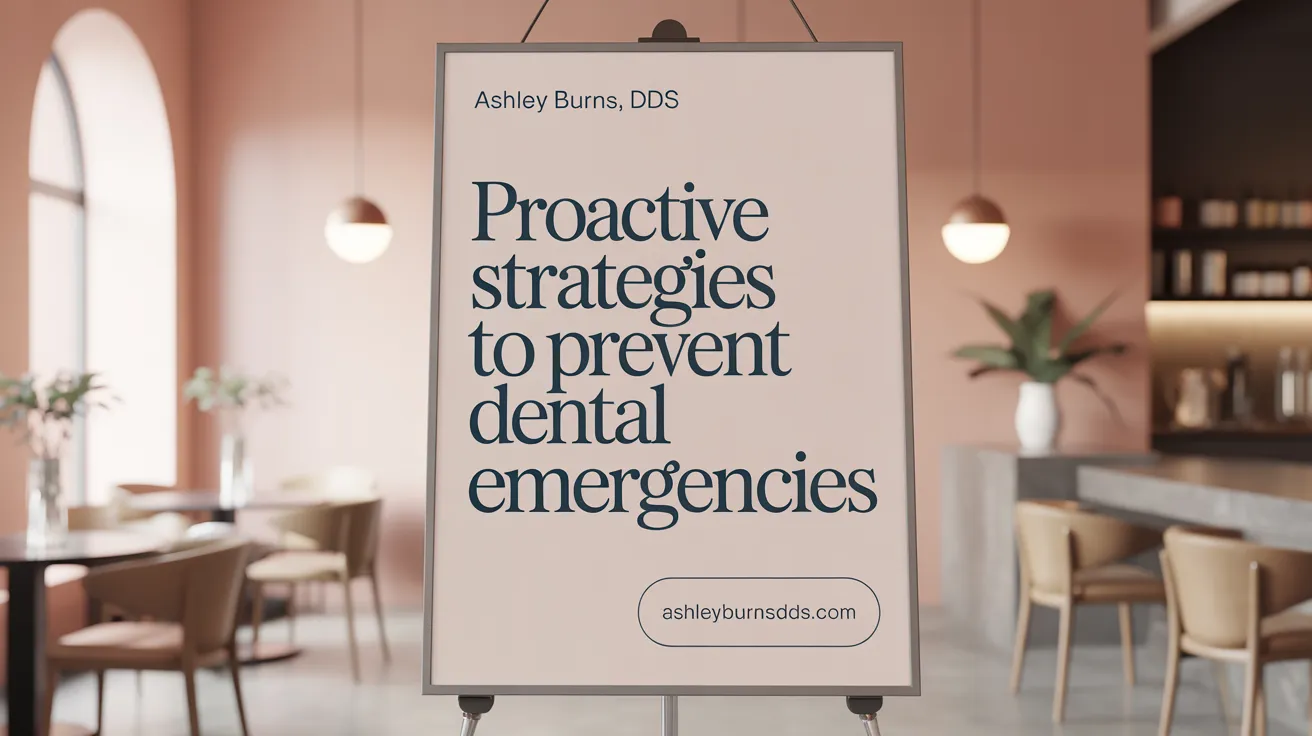
What strategies and guidelines are recommended for preventing dental emergencies through proper oral hygiene and dental practices?
Preventing dental emergencies relies heavily on consistent and effective oral hygiene habits. Patients should brush their teeth twice daily using fluoride toothpaste to remove plaque and prevent cavities. Flossing daily is essential for cleaning between teeth where a toothbrush cannot reach, helping to prevent gum disease and decay.
Professional dental care plays a crucial role; regular check-ups and cleanings every six months ensure early detection and removal of tartar, reducing the risk of emergency issues. During these visits, dentists can apply fluoride treatments and sealants that add extra protection to teeth.
Wearing mouthguards during sports and recreational activities significantly reduces the risk of dental trauma such as chipped, fractured, or knocked-out teeth. Avoiding harmful habits like biting nails, chewing on hard objects, or using teeth as tools prevents fractures and other injuries.
Dietary choices also influence dental health. A low-sugar diet diminishes the substrate for cavity-causing bacteria, while a mineral-rich diet contributes to strong enamel. Limiting acidic foods and beverages minimizes erosion, which are key components of preventive dental care.
Patient education is vital; understanding the early signs of dental problems encourages prompt care, which can prevent minor issues from becoming emergencies. Community programs such as water fluoridation, school sealant initiatives, and public awareness campaigns amplify these efforts and contribute to oral health prevention.
Together, these guidelines form a comprehensive approach to reducing the incidence of dental emergencies, enhancing oral health, and saving time and costs associated with urgent dental care as highlighted in preventing dental emergencies strategies.
Access to Preventive Care: A Key to Reducing Emergency Visits
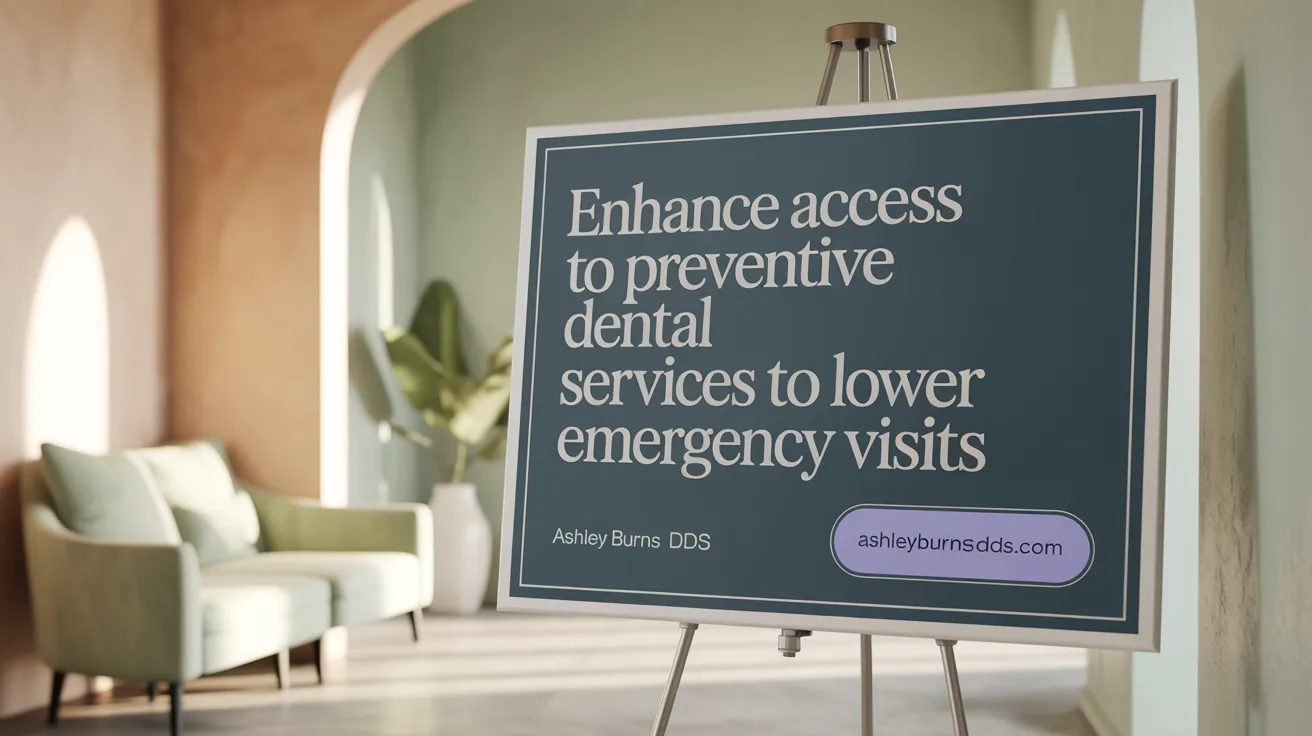 Access to preventive dental care plays a vital role in decreasing unnecessary emergency dental visits. Data show that many ER visits are for conditions that could have been avoided if patients had timely, regular dental care. Notably, uninsured and Medicaid populations tend to seek emergency treatment more frequently, often due to barriers in accessing routine dental services.
Access to preventive dental care plays a vital role in decreasing unnecessary emergency dental visits. Data show that many ER visits are for conditions that could have been avoided if patients had timely, regular dental care. Notably, uninsured and Medicaid populations tend to seek emergency treatment more frequently, often due to barriers in accessing routine dental services.
Although Medicaid expansion efforts have increased dental coverage for adults in some states, many providers do not accept Medicaid, limiting actual access. For example, acceptance rates as low as 11% in Missouri and 15% in Florida hinder effective use of available coverage. As a result, vulnerable populations—especially low-income, rural, and minority groups—face significant obstacles to preventive care.
Low utilization rates further compound the problem. Studies indicate that only around 9% of adults had at least one preventive dental visit per year, highlighting underuse of services that can detect issues early. Without regular check-ups, cavities and gum disease often worsen, leading to painful, costly emergencies.
To address these disparities, community and policy interventions are essential. Expanding dental workforce capacity through mid-level providers like dental therapists, increasing community dental clinics, and leveraging teledentistry services can improve access. Public health campaigns promoting routine care and removing cost barriers also contribute to better utilization.
By facilitating early intervention, these approaches help prevent problems from escalating into emergencies, effectively reducing the number and cost of unnecessary ER visits. Bridging socioeconomic and geographic gaps ensures equitable access to preventive services, ultimately fostering healthier communities and lowering healthcare costs.
Long-Term Benefits of Preventive Dental Care Beyond Emergencies
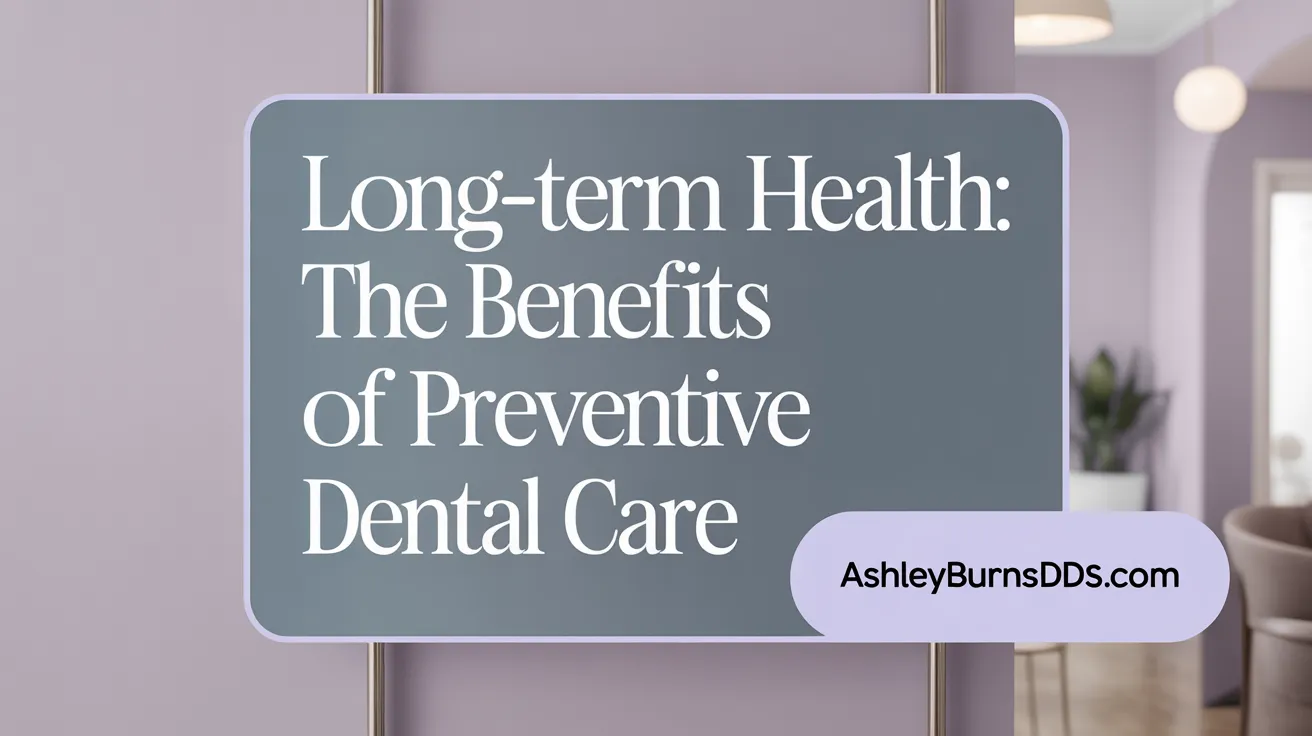 Engaging in preventive dental care plays a pivotal role in maintaining long-term oral health and enhancing overall quality of life. Regular dental visits, proper home hygiene, and early intervention significantly reduce the risk of cavities, gum disease, and eventual tooth loss. This proactive approach not only preserves natural teeth but also supports vital functions like speaking, chewing, and smiling, contributing to increased self-confidence and social engagement.
Engaging in preventive dental care plays a pivotal role in maintaining long-term oral health and enhancing overall quality of life. Regular dental visits, proper home hygiene, and early intervention significantly reduce the risk of cavities, gum disease, and eventual tooth loss. This proactive approach not only preserves natural teeth but also supports vital functions like speaking, chewing, and smiling, contributing to increased self-confidence and social engagement.
There is robust evidence that preventive dental care significantly lowers the demand for emergency oral health treatment and invasive treatments. Studies indicate that individuals who regularly visit the dentist experience fewer urgent dental issues, resulting in decreased hospital and emergency department visits. Such preventive measures are particularly beneficial in underserved populations, where access to routine dental services correlates with reductions in emergency care and associated costs. Programs that expand access to fluoride, sealants, and routine screenings demonstrate measurable declines in dental emergencies, highlighting prevention’s vital role in alleviating healthcare system burdens.
Beyond direct health benefits, preventive dental care has profound economic and societal impacts. By reducing the necessity for costly treatments and emergency interventions, communities save billions annually on healthcare costs. Additionally, better oral health correlates with improved systemic health, reducing risks of cardiovascular disease, diabetes, and respiratory infections. These health improvements translate into higher productivity and fewer days lost from work or school, supporting societal advancement.
Equity in oral health outcomes is also promoted through preventive care. Early and consistent intervention helps diminish disparities caused by socioeconomic factors, ensuring that vulnerable populations receive vital services like sealants and fluoride. Such efforts contribute to health equity, decreasing the prevalence of untreated dental disease among low-income groups and minorities, ultimately fostering a more just healthcare landscape.
In conclusion, embracing preventive dental care extends far beyond avoiding emergencies. It sustains oral functions, enhances overall health, reduces healthcare costs, and mitigates disparities. Promoting widespread access and adherence to preventive practices is essential for long-term health stability, societal productivity, and health equity.
Advancing Oral Health Through Prevention
Preventive dental care is a powerful tool to dramatically reduce emergency dental visits, associated costs, and improve overall health outcomes. With evidence suggesting that up to 80% of dental emergencies could be prevented through consistent care, adherence to preventive practices offers substantial economic and health benefits. Overcoming barriers to access and embracing community-wide preventive procedures like sealants and fluoridation are critical steps toward alleviating the burden on emergency healthcare services. Investing in prevention not only safeguards teeth but enhances quality of life, reduces healthcare disparities, and promotes sustainable oral health for all.
